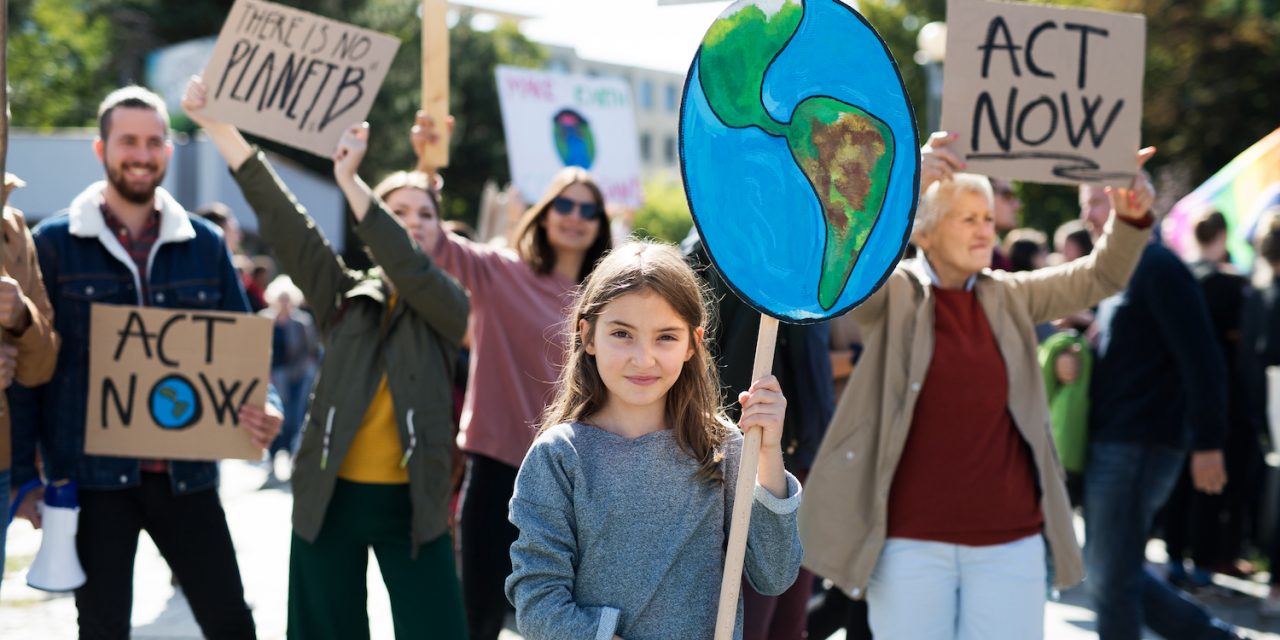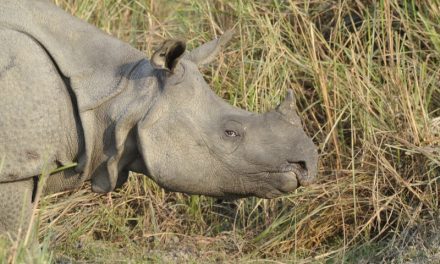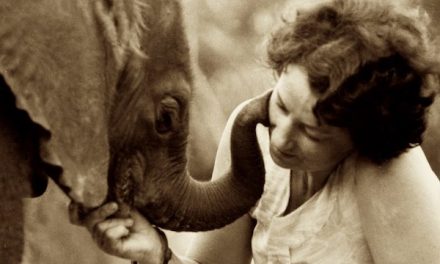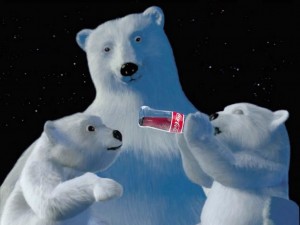The impacts of climate change—observable through the frequency and ferocity of extreme weather events—fall disproportionately on the youth and pose unprecedented challenges. This global-scale environmental degradation augments air pollution, jeopardizes food and water security and destroys vital infrastructure such as sanitation facilities—leading to the spread of diseases. The Children’s Climate Risk Index (CCRI) reveals: Every day, over 700 children under five die from diarrhea linked to inadequate water, sanitation and hygiene; Every year, over half a million children under the age of five die from air-pollution-related causes; 240 million children (1 in 10 children globally) are highly exposed to coastal flooding (likely to worsen as sea levels continue to rise); and approximately 820 million children (over one-third of children globally) are highly exposed to heatwaves (2020 was the hottest year on record).
The latest data from the Intergovernmental Panel on Climate Change (IPCC) forecasts that we have less than 11 years to make the transformation necessary to avoid the most severe impacts of climate change. While no child is responsible for rising global temperatures, they are responsible for bearing the largest burdens and will inevitably pay the highest costs.
These unfortunate realities are exacerbated by COVID-19, which has proven to be a uniquely dis-equalizing crisis. Inadequate access to vaccines and healthcare aside, learning losses and job losses have been monumental among women and youth. Schoolchildren around the world have lost an estimated 1.8 trillion hours—and counting—of in-person learning since the start of the pandemic. It’s no wonder Generation Z—the demographic succeeding Millennials—has become colloquially known as ‘zoomers’. This era of primarily digital existence connects people globally and diversifies perspectives. These tech-born transformations serve as the backdrop for children’s most formative years, shaping their experiences and inspiring agency.
Youth climate activist Mitzi shares how the COVID pandemic altered her methods of information decimation from the Philippines:
“The Philippines’ lockdown has made campaigning and organizing challenging. That’s the thing about activism—it’s not just about the powerful massive strikes and creative actions seen on media. It’s not just about going out on the streets and yelling out chants. Most of it is hours and hours of planning, tiring Zoom calls, strengthening the bonds between our members, and tirelessly convincing people of the need to act and demand change even when it all seems hopeless. The Filipino youth are fighting for environmental justice, and we have a global youth movement fighting for the same thing. This gives me so much hope, the knowledge that on almost every continent, we have a friend also calling for urgent climate action. We are fighting with the people, leading the way alongside the most marginalized sectors of society, and history has shown us that as long as we fight for justice and peace, we will always win.”
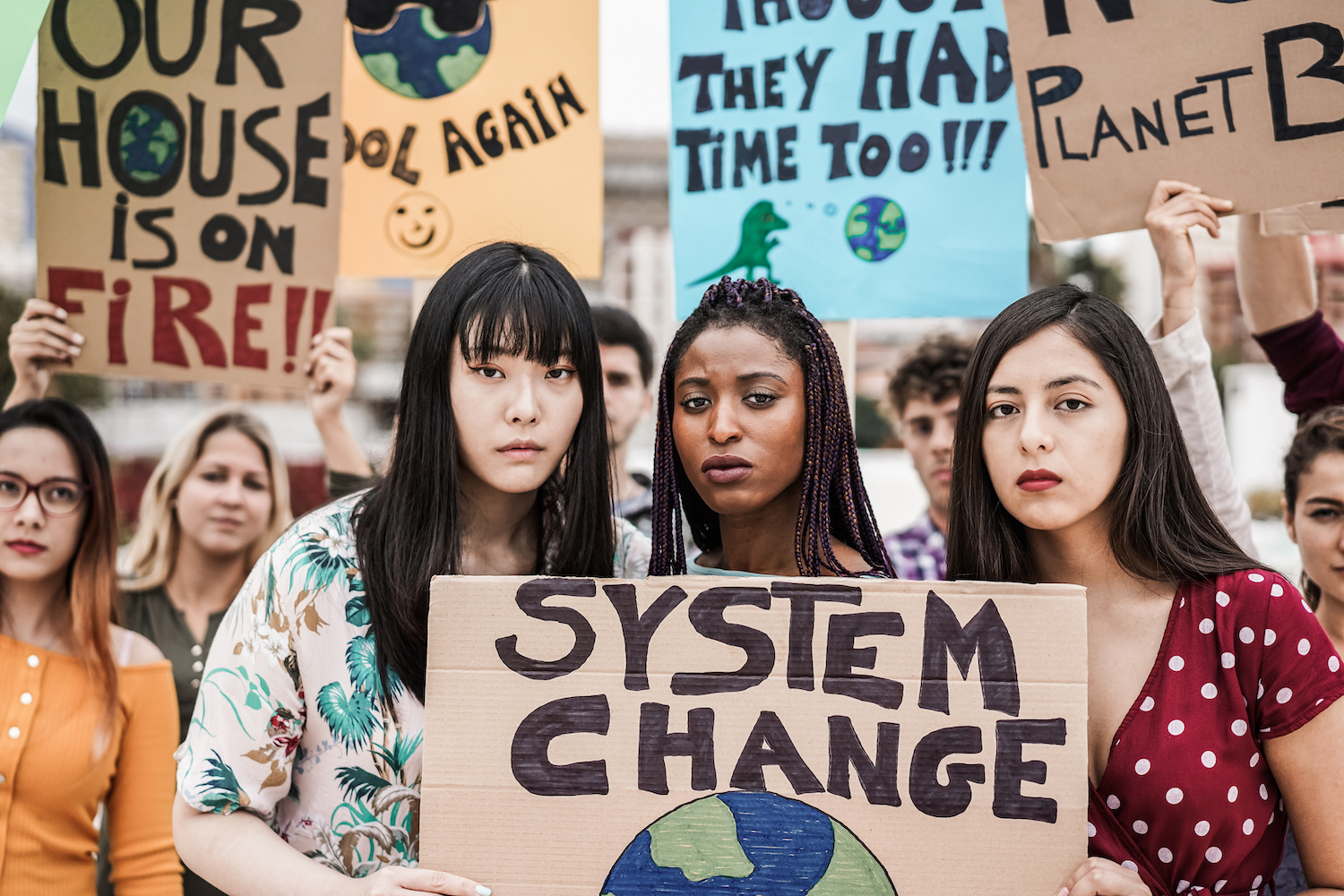
The Changing Childhood Project—a collaboration between UNICEF and global analytics firm, Gallup—was created to explore what it means to be a child in the 21st century, with the ultimate goal being to center the experiences and perspectives of young people. The UNICEF–Gallup survey was conducted between January and June 2021 in 21 countries across the globe. Approximately 1,000 people were surveyed in each country, providing a representative sample of two age cohorts: young people (aged 15–24, in line with the United Nations’ definition of youth) and those aged 40.
The report revealed the following:
- Today’s 15-to-24-year-olds most often turn to online sources—primarily social media—to stay informed about current events. By contrast, people aged 40 and older are more likely to turn to television, radio and newspapers to stay up to date. However, the young are more discerning than their parents when it comes to consuming digital technology. Amid a sea of mis- and disinformation, they report low levels of trust in the information sources they use most.
- Brought up in a digitally-interconnected and globalized world, the young identify as global citizens. Young people are dissatisfied with progress in tackling discrimination and they demand greater tolerance and pluralism, especially in the realms of LGBTQ+ rights.
- Young people feel a growing pressure to succeed in childhood and experience deteriorating mental health. Some young survey respondents say young people are more willing to acknowledge, de-stigmatize and openly discuss mental health conditions than their older counterparts. However, more data on mental health among young people—particularly those in low- and middle-income countries—are urgently needed to better identify their needs and tailor interventions.
- Fifty-eight percent of 15- to 24-year-olds and 53 percent of those aged 40 and older agree that political leaders need to listen to children’s voices when making decisions. In certain countries, a significant proportion of both young and older people propose a minimum voting age below the current legal age in their country.
- Across all 21 countries surveyed, a median of 57 percent of young people say the world—and childhood itself—is getting better with each new generation—despite struggles with mental health, and in the face of upheavals, including the COVID-19 pandemic and climate change. Many are even optimistic about the world’s trajectory.
- Youth-led protests around climate change, racial equality, diverging electoral preferences and young people’s reliance on the Internet have reinforced the narrative of a growing intergenerational divide. In the media, the young are often portrayed as impatient, naïve, demanding, militant, outspoken and entitled. Results show that these clichés are not supported by data. Young people are aware of the world’s problems, they are cognizant of the misinformation that pervades virtual spaces and they are actively fighting for a better future while combating higher levels of anxiety and depression.
Youth Perspectives
Article 12 of the United Nations Convention on the Rights of the Child states that children have the right to express their views freely in all matters affecting them. Young people have taken to the streets to protest issues from climate change to gender equality, and from racial equality to human rights issues. Social, cultural and political barriers may inhibit children’s participation in public spaces, but their courage in challenging policies and policymakers bolsters their role as formidable stakeholders in addressing climate change.
Nkosi from Zimbabwe relays:
“I have dedicated my voice as a voice of the voiceless, to call for immediate action and there is no better time for acting than now. Take a closer look at the unpredictability and uncertainty of weather patterns, the rise in sea levels, frequent cyclones, hot temperatures and heatwaves—honestly, how am I expected to attend school under a scorching sun? Above all I am the one being affected by the changing climate. We are here, we are smart, and we have the solutions. I am young but climate change has put more on my plate; more is expected out of me.”

© Anders Hellberg, CC BY-SA 4.0 via Wikimedia Commons
Greta Thunberg
On one fateful Friday in 2018, Swedish student, Greta Thunberg, sparked a global movement by protesting against climate change. Now, in week 187 of her school strike, she has garnered the support of millions of young people across the planet. She passionately proclaims:
“Our futures are being destroyed, our rights violated, and our pleas ignored. We will strike again and again until decision-makers change the course of humanity. We have a duty to urgently raise awareness and demand action. What began on a Friday three years ago, has continued every Friday since, including today. We have a duty to each other and to the children that are too small to hold a pen or a microphone, but that will experience even greater challenges than we are. Movements of young climate activists will continue to rise, continue to grow and continue to fight for what is right because we have no other choice.”
Thunberg valiantly admonishes governing bodies, world leaders and the older generation for taking insufficient action in the face of this global emergency. During the 2019 UN Climate Action Summit, Greta Thunberg and 15 other activists from 12 countries filed a case against Argentina, Brazil, France, Germany and Turkey for violation of the activists’ rights as children to life, health and peace as protected under the 1989 UN Convention on the Rights of the Child (CRC). The petitioners alleged that the countries failed to meet their emissions goals as outlined under the 2015 Paris Agreement.
Thunberg’s unrelenting and unforgiving commitment to speaking truth to power attracts much criticism and she is often condemned for being autistic. In response to ableists and ‘haters’, Thunberg tweeted: “I have Asperger’s syndrome and that means I’m sometimes a bit different from the norm. And—given the right circumstances—being different is a superpower.”
Alexandria Villaseñor
Every Friday, this New York teen strikes outside the UN headquarters in solidarity with the other youth activists who are united by Greta Thunberg’s Fridays For Future global campaign. She expresses: “I’m too young to vote. When I strike, I feel like I am taking back some agency in my future.”
Just a few weeks before COP26, The Committee on the Rights of the Child ruled Thunberg’s case inadmissible. Villaseñor, who was one of the petitioners, responded with the following promise: “We are still going to be making our voices heard and if anything it’s made a lot of us even more upset and even more ready to make our voices heard. So we’re not going to stop, but it definitely was a landmark in showing how much we have to put pressure and how much we have to push.” Ayakha Melithafa, a climate activist from Cape Town who was also a petitioner on the case, said: “We’re on the wrong track and our political leaders must change course immediately. Young people should not need to bring legal claims to hold them to account for promises made.
Luisa Neubauer
Often referred to as the ‘German Greta Thunberg,’ this 22-year-old has helped organize massive Fridays for Future marches, works with climate organizations like 350.org and regularly advocates for climate reform at global diplomatic events. “It really feels like we’re sitting in a car heading for an abyss,” she wrote in a blog post for WWF. “But instead of braking, it accelerates. We were put in this car without being asked. There really is this abyss. The man-made climate change is real and we are experiencing these days the serious changes that it brings.”
Autumn Peltier
Autumn Peltier is an Anishinaabe Indigenous rights advocate from the Wiikwemkoong First Nation on Manitoulin Island, Ontario, Canada. She is fighting for clean drinking water for First Nation communities in Canada and around the globe. In 2018, at the age of thirteen, Peltier addressed world leaders at the UN General Assembly on the issue of water resource protection. In Neskantaga First Nation, residents have lived without clean drinking water for 25 years. “Children shouldn’t have to grow up not knowing what it’s like to drink from your faucet, or shower, or wash your hands. Canada is not a Third World country but some of our First Nations are living in Third World conditions.” In 2019, she was named Chief Water commissioner for the Aniishnabek Nation.
Indigenous people have always been at the forefront of environmental movements. According to the Center for International Forestry Research, Indigenous and Afro-descendent communities manage 40 percent of all ecologically intact land on the planet, including 22 percent of the world’s carbon-sinking tropical forests. Indigenous people protect more than 80 percent of the earth’s biodiversity and Autumn Peltier is ensuring her communities are being protected too.
India Logan-Riley
Youth activist India Logan-Riley works to center Indigenous rights in the movement for environmental justice by securing land sovereignty in her native Aotearoa, which is the Māori name for New Zealand. According to the World Resources Institute, 2.5 billion people depend on land owned by Indigenous people for food, water and air quality. On Native lands, critical ecosystems are protected against extractive industries and deforestation rates are typically half the global average.
Xiuhtezcatl Martinez
Also known by the initial ‘X’, Xiuhtezcatl Martinez is a young advocate for Indigenous and marginalized communities. Martinez was one of 21 plaintiffs in Juliana v. United States—a lawsuit filed in 2015 against the US government for the continued use of fossil fuels and failure to act on climate change. Martinez has made speeches at the United Nations on multiple occasions—in English, Spanish and his native language Nahuatl—to expose environmental injustice and inequity.
Nakabuye Hilda F.
Around 77% of Uganda’s population is under the age of 30. Activist, Nakabuye Hilda F., campaigns to raise awareness of the hazards of plastic pollution. She’s become a leading figure in Uganda’s Fridays for Future climate marches where she organizes plastic clean-up efforts and urges her government to take action to reduce greenhouse gas emissions.
Ridhima Pandey
At nine years old, Ridhima Pandey sued the Indian government over its failure to reduce greenhouse gas emissions, develop a carbon budget strategy and create plans for recovering from the effects of climate change. “This will impact both me and future generations,” she wrote in her petition.
Brianna Fruean
As a child, Fruean witnessed a cyclone wreak havoc in her homeland of Samoa. Ever since, she has been a vehement advocate for vulnerable communities facing environmental destruction wrought by climate change. At 11, she became a founding member of the Samoan chapter of the climate organization, 350.org and at 16, she became the youngest winner of the prestigious Commonwealth Youth Award.
Rayanna Cristine Maximo Franca
Maximo Franca believes that empowering Indigenous women is a necessary part of protecting the environment as a whole. Indigenous people, people of color, women and children are disproportionately impacted by climate change. In Brazil, Indigenous communities have fought relentlessly for land rights and access to vital resources. Preserving the Amazon not only secures the livelihoods of local people, but it also secures the futures of people across the planet who rely on the natural carbon-capturing power of the trees.
Oldaosu Adenike
Adenike is a self-proclaimed ‘eco-feminist’ who organizes for Nigeria’s Friday for Future climate marches and is active on Twitter where she educates her followers on the complexities of climate change. “As youths, we are a powerful force and our actions can make a huge difference. Thus, I am calling on young people to come out en masse and demand urgent climate action from African leaders. It is happening all over the world, youths have the power to influence many things and make our leaders listen to us,” says Oldaosu.
Qiyun Woo
This environmental artist from Singapore uses creative illustrations to engage and educate young viewers on topics including, circular economy, sustainable finance, environmental policies and ecology. Woo also partners with a range of stakeholders in private and public sectors, hosts book clubs on alternative economic models and ecofeminism and produces climate-related content for media outlets such as TODAY online and Singapore Policy Journal.
Kevin J Patel
Patel’s fight for environmental justice began as a child, growing up in LA, where air quality was often poor. He had a goal of reducing air pollution so his local community would not suffer the effects of climate change, such as severe heart and lung issues. Patel has since taken up a number of roles, including co-deputy partnerships director for the youth-led climate movement, Zero Hour, lead organizer for Youth Climate Strike LA and founded OneUpAction International—an organization that empowers marginalized youth.
Lesein Mutunkei
Mutunkei combines reforestation efforts with his love of football. After learning that Kenya was losing forest area at the equivalent of 164 football pitches every day, he founded Trees4Goals with the mission to plant 11 trees for each goal he scores. Thus far, he has planted more than 1,000 trees. In addition to educating schools and football clubs about pollution and rain forest destruction throughout Africa, Mutunkei attends climate conferences around the world—promoting sustainability as he travels.


















